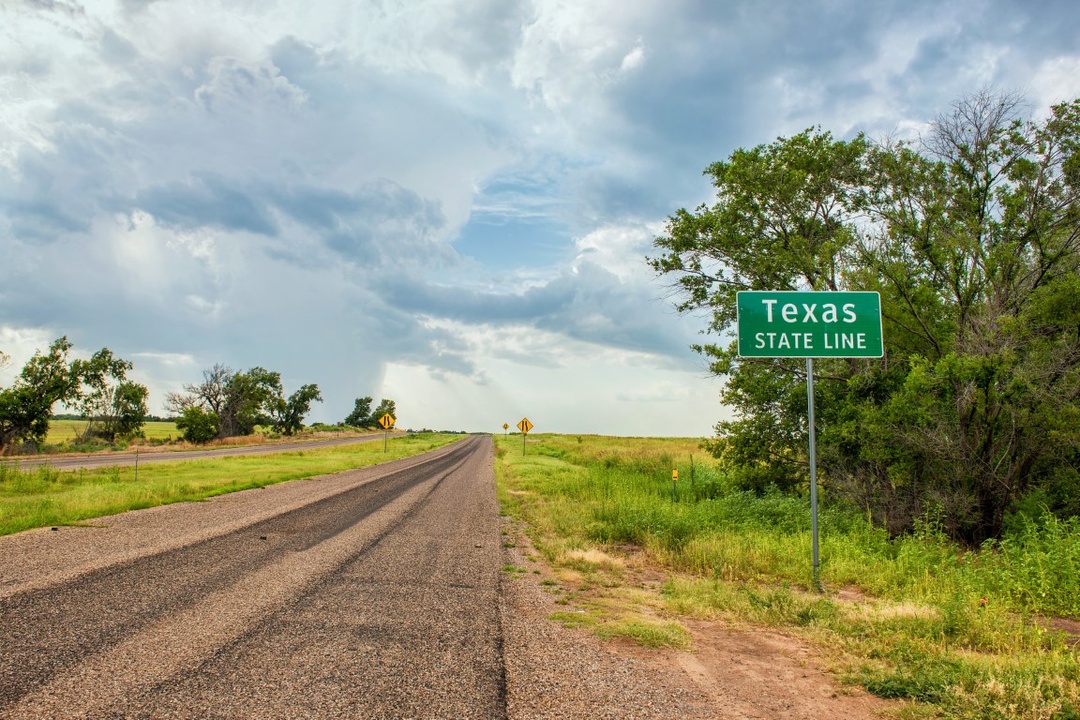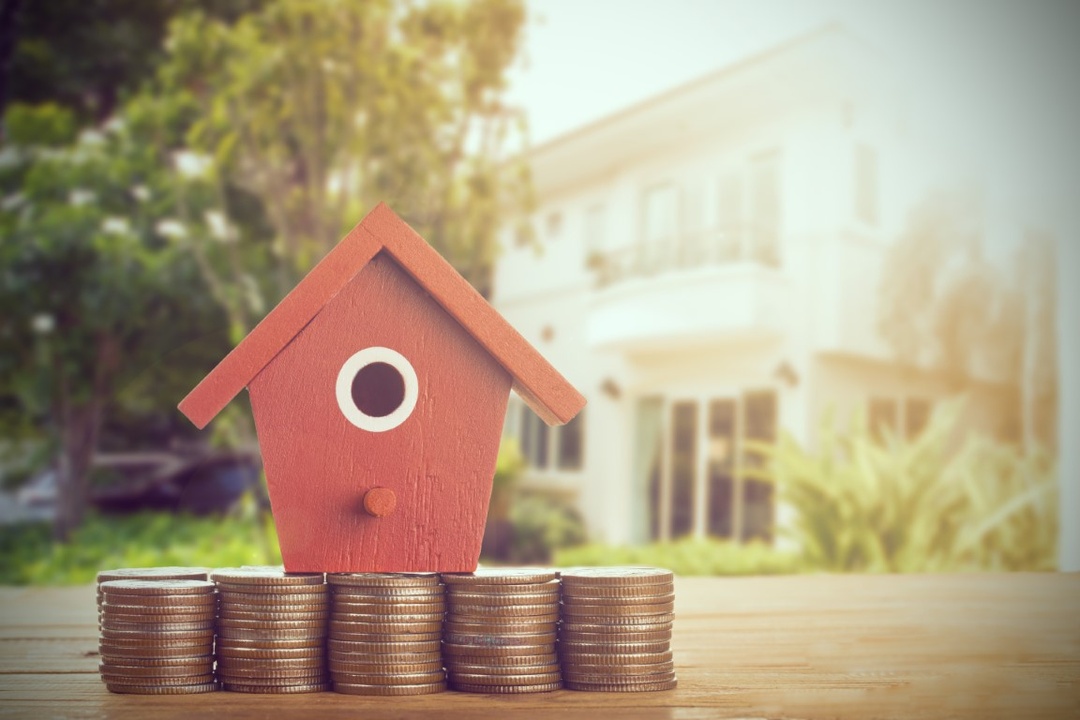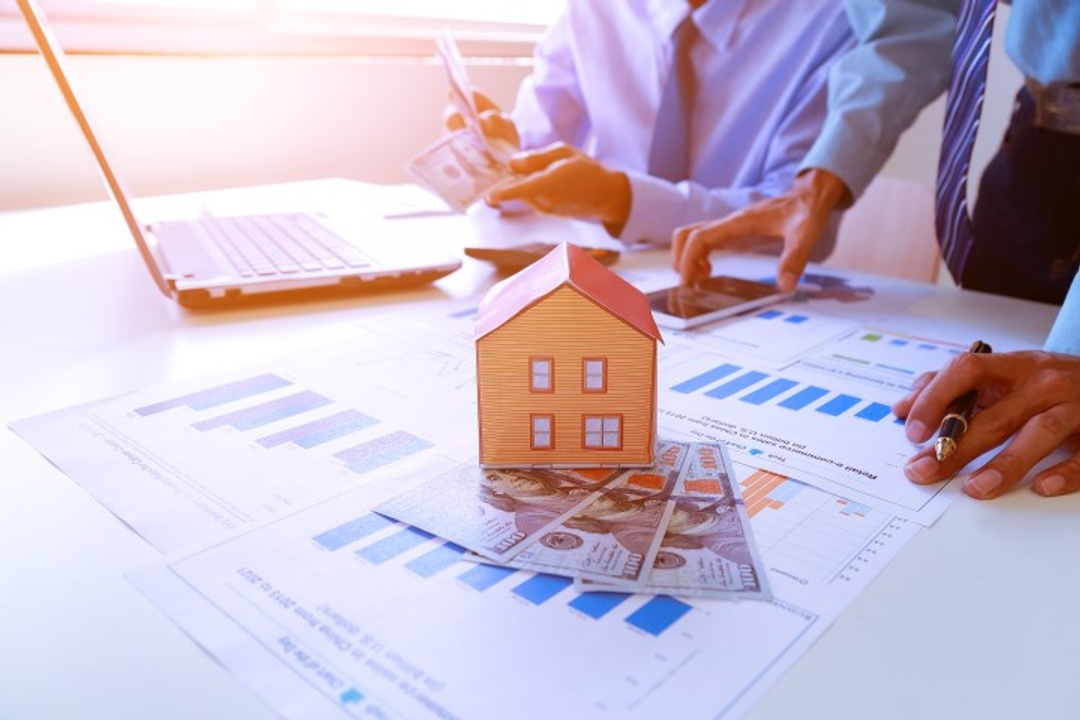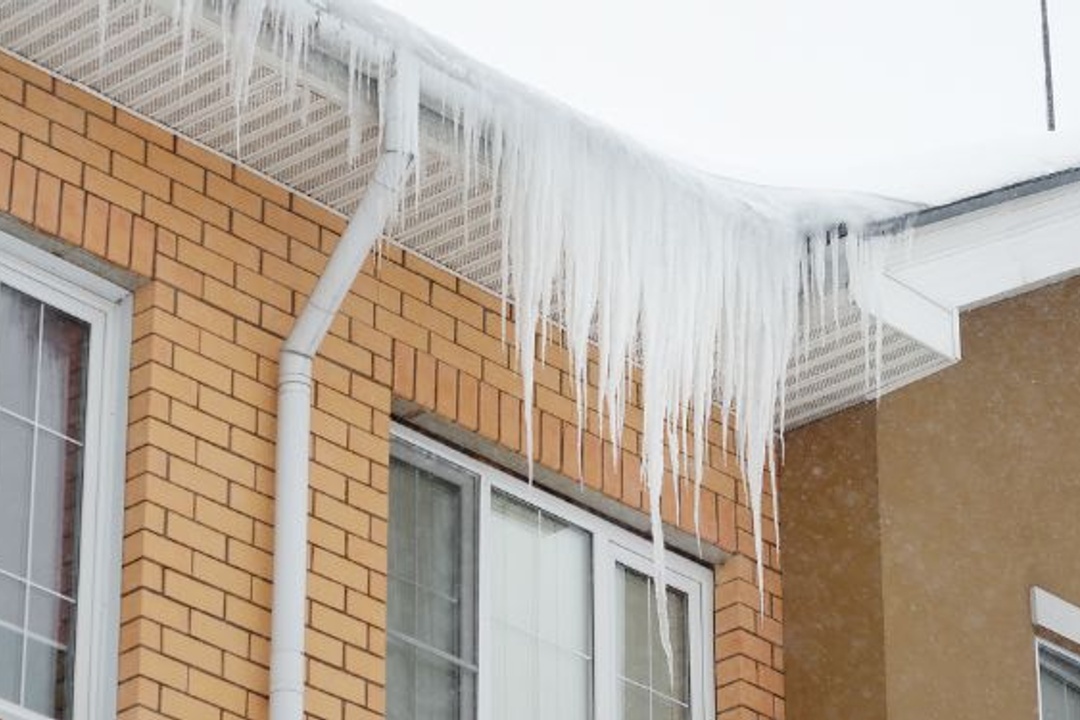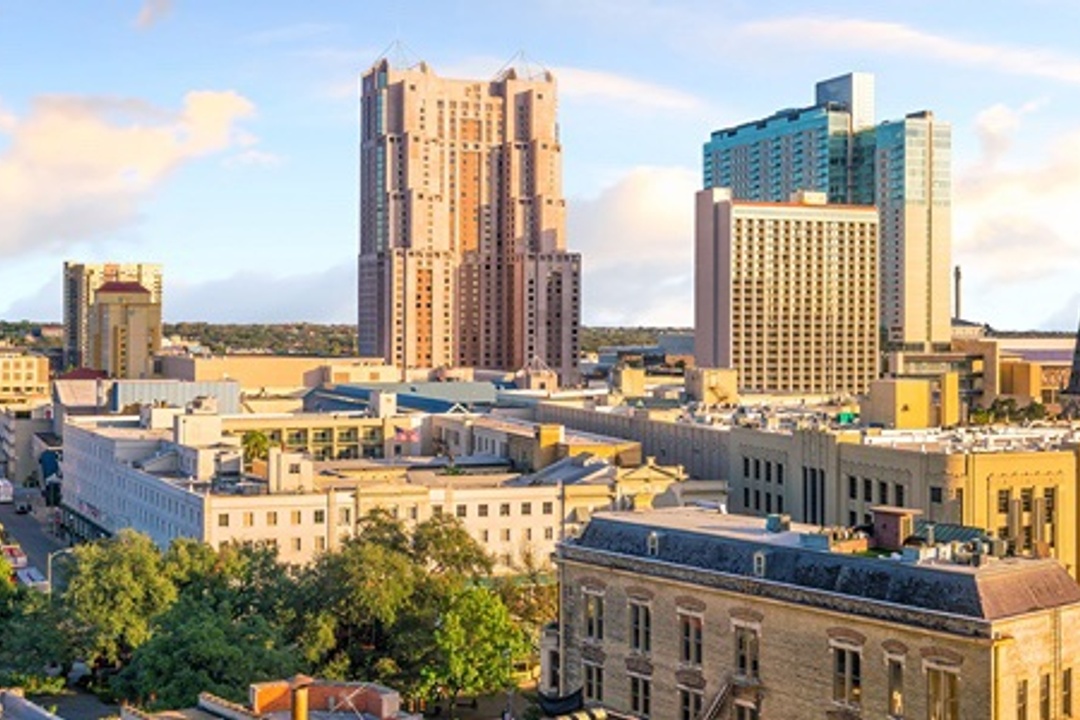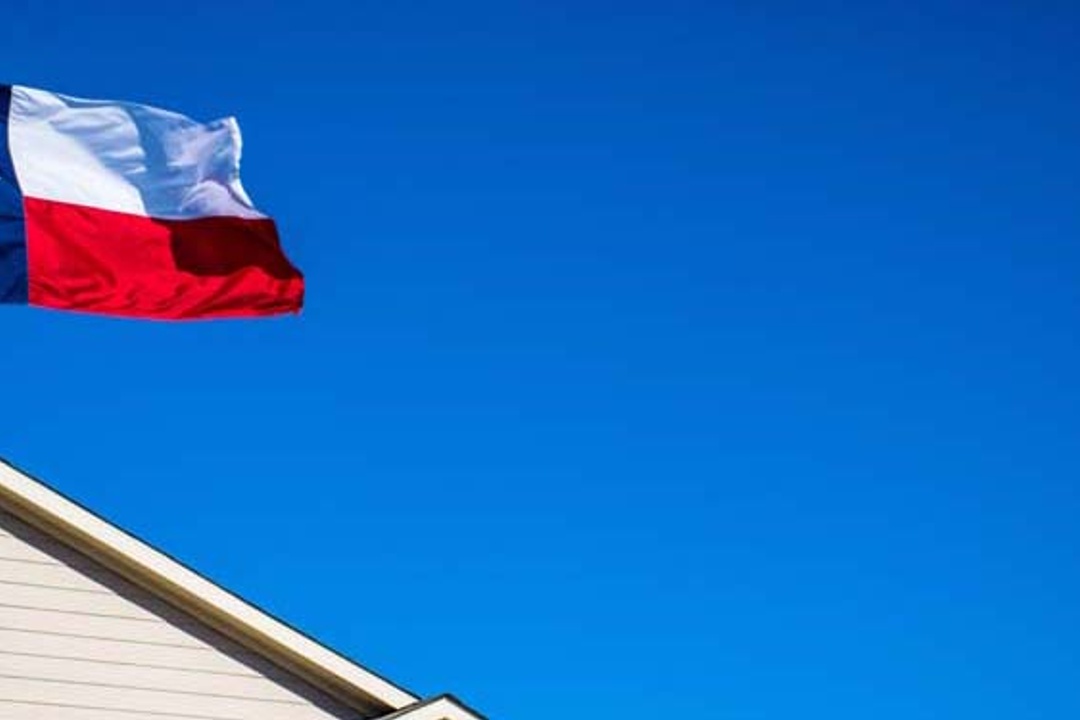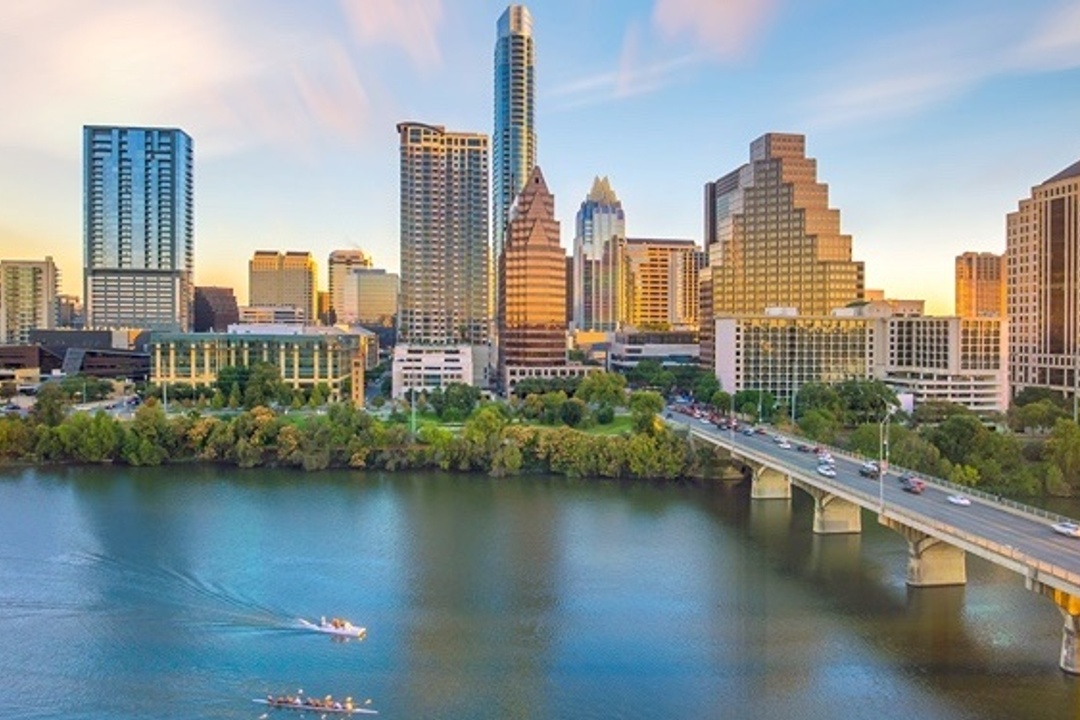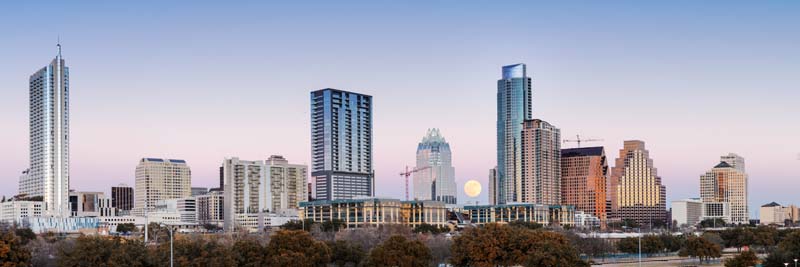
A steady increase in jobs and continual influx of newcomers attracted to a better quality of life and more affordable living has led to housing sales of unprecedented numbers. New housing market statistics indicating increasing inventory and lower residential home sales suggest that the Austin-Round Rock Metropolitan Statistical Area's housing market is faltering.
According to the Austin Board of REALTORS, the slowdown is returning the Austin area home market to "pre-COVID normalcy" (ABoR). "These figures are a breath of fresh air for a property market that has been holding its breath," said ABoR president Cord Shiflet. "Our market's trend over the last two years was unsustainable, and it was not going to endure." The recovery from the COVID-19 pandemic, historically cheap borrowing rates, and tremendous job growth all contributed to record-high house demand in our market."
While the price of homes in the Austin area is still on the increase, there have been several changes in both home buying and selling behavior within the Austin area.
What's Happening:
* The Austin market is by no means balanced and it still favors sellers.
* Buyers have more bargaining power now than at any point since before the pandemic.
* Homes still closed at over 100% of the list price on average in June.
* Residential home sales declined 20.3% year over year.
* There is an influx of homes on the market.
* The median price recently rose 13%, setting a record of $537,475.
* New listings recently jumped 19.6% to 6,160.
* Housing inventory increased to 2.1 months of inventory, up 1.5 months from last June — a sign of a seller's real estate market.
In this article, we’ll go over the Austin real estate market, key Austin housing market statistics, and a view into the various changes in housing market numbers.

A Look Into Austin’s Home Value Increase
* According to Redfin, Austin housing prices have increased by nearly 40% by the end of 2021 compared to the end of 2020. This compares to a national increase in home values of 19%.
* Other Texas metropolitan areas, such as McAllen and San Antonio, saw a 24% increase in total home value during the same time period, while Houston and El Paso saw a 23% increase. Year over year, the total value of all homes in Fort Worth increased by 22%, while the total value of all homes in Dallas increased by 21%.
Austin's home prices have risen in recent years, as home prices have in other housing markets, due to a combination of increased demand and limited inventory. Austin's housing market is considered extremely competitive, with many homes receiving multiple offers. According to Redfin, the median sales price of a home in Austin increased 8.2% from July 2021 to $644,000 in July 2022.

Key Austin Housing Market Statistics
Below are some of the key statistics surrounding the Austin housing market over the last year.
Change in Median Sales Price
* Within Austin city limits, the median home price is $640,000, a new record and a 16% increase from April 2021.
* The median sales price for the entire Austin-Round Rock MSA was $550,000 in January 2022.
Median Days on Market
On average, homes spent 22 days on the market, 10 days more than July 2021, and active listings spiked 167.9% to 8,709 listings. For Bastrop county specifically, a home stays on the market an average of 24 days, but it usually sells much quicker.
H3: Price Per Square Foot
* The average sales price per square foot in Austin is $364 as of July 2022.

Population Growth
* Austin is the fastest-growing major metropolitan area in the United States, with a 34% increase in population since 2010. Austin has gained over 579,000 new residents in the last decade, averaging 184 new residents per day.
Key Population Figures
* The city of Austin has nearly 962,000 residents, and the Austin-Round Rock metropolitan area has over 2.2 million people.
* According to the United States Census Bureau, the City of Austin gained nearly 171,465 new residents between 2010 and 2020.
* Austin's population has grown by 2.7% year on year and by 34% since 2010.
* Austin is located in Travis County, the United States' second most populous capital city, trailing only Phoenix.
* Austin remains a top destination for migrating talent, ranking first among the top 50 largest metro areas in terms of new residents as a percentage of the total population.
* The Austin MSA's population is expected to more than double by 2050, reaching more than 4.5 million people.
Job Market
Austin is the third best-performing metro area in the United States in terms of job growth. Since 2021, Austin-Round Rock has gained over 90,000 new jobs, for an 8% job growth rate.
According to the Wall Street Journal, many new residents are "coastal émigrés" drawn by the region's burgeoning tech industry, lack of state personal income tax, and laid-back atmosphere. According to one tech entrepreneur who relocated to Austin from New York City, "the cost of living is 40% less than New York City." And everyone here is extremely friendly."
Key Employment Statistics
* According to the Federal Reserve Bank of St. Louis, the GDP of Austin-Round Rock is over $168 billion and has grown by more than 85% in the last ten years.
* Austin's job growth rate was 8% between March 2021 and March 2022.
* According to the BLS, the Austin metro area's unemployment rate is 2.5% as of April 2022.
* Austin's target industry sectors include advanced manufacturing, creative and digital media, clean technology, life sciences, space technology, and data management.
* AMD, Apple, Dell, Cirrus Logic, Home Depot, Legal Zoom, Oracle, and Vrbo all have corporate or regional headquarters in Austin.

Historical Home Price Trends
Even before the pandemic, the Austin housing market had been prospering, with purchasers moving to the area in search of jobs, as well as somewhat more cheap single-family houses, at least in comparison to cities like New York and California.
Historical Home Values
In a report released by the Texas Association of Realtors that examines home-selling activity in the state over the previous ten years (2011 through 2020), the median home price in the Austin area increased by 82 percent between 2011 ($189,000) and 2020 ($343,914). Last year, no other Texas metro reached the $300,000 mark, but oil-rich Midland came the closest ($299,000).
In a more recent Zillow's Home Value Index report, home values in Austin increased 39.4% in the last year. The ability to work remotely, which many businesses discovered during the pandemic, boosted the city's popularity. As a result, home prices have increased by nearly 90% in the last five years.

The report also went further to analyze several areas within the Austin metro and their percentage growth over the last 5 years (March 2017- March 2022).
* Typical home value, March 2022: $548,738
* One-year price increase: +48.4%
* Five-year price increase: +96.3%
* Typical home value, March 2022: $549,818
* One-year price increase: +53.5%
* Five-year price increase: +98.8%
* Typical home value, March 2022: $618,479
* One-year price increase: +50.6%
* Five-year price increase: +100.5%
* Price increase since Jan. 2000: +237.2%
* Typical home value, March 2022: $676,077
* One-year price increase: +38.6%
* Five-year price increase: +91.8%
* Price increase since Jan. 2000: +236.0%

* Typical home value, March 2022: $909,515
* One-year price increase: +49.2%
* Five-year price increase: +106.3%
* Price increase since Jan. 2000: +278.0%
* Typical home value, March 2022: $2,546,281
* One-year price increase: +48.0%
* Five-year price increase: +106.6%
* Price increase since Jan. 2000: +295.4%
* Typical home value, March 2022: $1,139,052
* One-year price increase: +67.7%
* Five-year price increase: +168.6%
* Typical home value, March 2022: $741,654
* One-year price increase: +67.7%
* Five-year price increase: +128.8%
* Price increase since Jan. 2000: Data not available
* Typical home value, March 2022: $815,625
* One-year price increase: +38.8%
* Five-year price increase: +86.4%
* Price increase since Jan. 2000: +181.1%
In other counties of Texas, the rise in home values is also noticeable, according to the Zillow Home Value Index. In fact, Williamson County ranks second when it comes to percentage increases between March 2017 and March 2022.
The typical home value in the county jumped by 94.3% during that time period. Travis County ranks third statewide, at 92.1%, and Hays County ranks fourth, at 89.5%. Mills County, home to the city of Goldthwaite, saw the biggest jump in home prices between March 2017 and March 2022. The typical home value increased by 95.5%, from about $161,000 to almost $315,000.

Historical Inventory
According to the newest monthly report from the Austin Board of Realtors, relief is on the way in the heated Austin housing market. The number of active listings in the Austin-Round Rock metro region increased by 218 percent year over year, bringing the area's housing inventory to 2.1 months, a level not seen since November 2019.
Housing inventory in Austin increased by 145 percent in June 2022 compared to June 2021, and inventory in Travis County increased by 159 percent year over year. Despite a considerable increase in inventory and a dip in sales (ABoR claims metro sales decreased 7.7 percent in the first half of 2022), home prices are still rising, albeit more slowly.
Months of inventory in the Austin real estate market is just 0.8 months, which means there is about a 5-week supply of homes for sale in the Austin metropolitan area.
Austin Real Estate Forecast for 2023
The Austin real estate market was one of the hottest in the country throughout 2021 and into 2022. This was partly due to an inflow of buyers from other sections of the country, as part of a pandemic-fueled nationwide home purchasing spree. It is no longer news that many potential homeowners and investors are now asking what the Austin home market will look like and whether it is safer to invest in 2023.
While no one can accurately foresee future economic or housing patterns, we can make educated guesses based on existing situations. With that in mind, here is our Austin, Texas housing market forecast for 2023.

More Inventory for Home Buyers
In June of 2022, Realtor.com published a housing market update with information for the nation’s largest 50 metropolitan areas. According to that report, the Austin-Round Rock metro area led the nation in terms of housing market inventory growth.
Total active inventory (i.e., property listings) rose by nearly 86% from May 2021 to May 2022. That was the largest year-over-year increase in inventory among the nation’s 50 largest metropolitan areas. In fact, no other metro even came close to the inventory growth seen within the Austin housing market.
Here is our first forecast and prediction for the Austin real estate market in 2023. Home buyers who make a purchase next year will almost certainly have more properties to choose from when compared to those who bought a home in 2021 or early 2022. This could bring a bit more balance into the Austin housing market while making the house-hunting process less frustrating for home buyers.
Additional (Though Slower) Home-Price Growth
It's fairly straightforward to forecast that home prices in Austin will continue to rise for the foreseeable future. Record-low inventory levels and high buyer demand will keep pushing up property prices. That being said, many real estate experts still believe that prices will begin to fall in the coming months.
That gets us to our second prediction for the Austin, Texas housing market in 2023. Home prices likely continue to rise well into next year, but at a slower rate than in prior years. According to a report, the typical home value in the Austin-Round Rock metropolitan area increased by around 37% between May 2021 and May 2022. That was one of the largest year-over-year price increases of any metro area in the country.
When the report was published in June 2022, the median valuation for the Austin-Round Rock real estate market had nearly hit the $600,000 mark. Between 2016 and 2022, the median property price in the area more than doubled. However, the rate of increase in housing prices is expected to decline in the second half of 2022 and into 2023. In fact, we're already seeing evidence of this tendency.
According to recent data, 18.3% of home listings in the Austin metro area were reduced in price. This was a huge increase over the previous year. Inventory expansion has something to do with this. As more houses are on the market in the Austin area, sellers are more likely to lower their asking prices in order to entice buyers. This tendency is expected to continue into 2023, making it one of our top predictions for the Austin real estate market.
A Less Frenzied Pace Compared to 2021 and 2022
Soaring home prices have reduced the number of qualified buyers within the Austin metro area. Additionally, today’s higher prices are likely to reduce the number of people who move into the area from out-of-state, seeking affordable homes.
On top of this, home buyers have to contend with higher gas prices, inflation, and higher mortgage rates. All of these cost-related trends should have a cooling effect on the Austin real estate market later this year and in 2023.
This brings us to our third and final prediction for the Austin, Texas housing market. In 2023, home buyers in the area will likely enjoy a less frenzied and frantic pace within the housing market. There will probably be fewer buyers to contend with, along with a significant reduction in bidding wars and multiple-offer scenarios.

Austin’s Rental Market
With six local colleges and universities, Austin has long been a majority rental market to accommodate the growing number of students. The University of Texas at Austin alone boasts 500,000 students and faculty. Many students choose to stay in Austin once they graduate due to its abundant job opportunities, leading to a large demographic of young professionals who traditionally rent. NeighborhoodScout reports that 55% of Austin residents are renters.
Rental prices have increased by 93% over the last 10 years, thanks to the same housing shortage that is affecting home prices. This rent increase is the highest in the country.
Key Austin Rental Market Statistics
* According to the most current Zumper data, the median rent in Austin is $2,285 per month for a three-bedroom property (June 2022).
* Austin rents have risen by 9% year on year.
* Rents for a three-bedroom apartment in Austin have risen by around 23% in the last three years.
* Renter-occupied households account for 61% of all occupied dwelling units in the Austin metropolitan region.
* Heritage Hills, Windsor Hills, and University Heights are the cheapest neighborhoods in Austin for renters, with average monthly rates of $1,595 or less.
* Downtown Austin, West Austin, and Galindo are the most costly neighborhoods in Austin for renters, with average monthly prices ranging from $5,400 to $6,521 per month.
Where are rents growing fastest in Austin Metro Area (Y/Y%)
* Georgetown had the fastest growing rent, up 33.6% since this time last year.
* Pflugerville was second with rent climbing 31.8%.
* Cedar Park ranked third with rent increasing 31%.
The Fastest Growing Cities For Renter in Austin Metro Area (M/M%)
* Cedar Park had the largest monthly renter growth rate, up 6.3%.
* San Marcos was second with renters increasing at 2.9%.
* Austin ranked third with renters increasing by 2.6%.

Should You Invest in the Austin Market in 2023?
Despite low inventory, increasing rents, and increasing home prices, Austin real estate investors with strong investment strategies can still profit. The city is continuing to grow – both in population and industry– and investors are creating solutions to combat the low housing inventory with multiple rental communities.
Below are several reasons why you should consider investing in the Austin market in 2023:
Austin’s Economy Is One of The Best Performing Among Major Metros
Austin, Texas is drawing massive business to the city, turning it into one of the best-performing metro areas in the United States. While most of the country’s major metros spent the last two years battling declining economies, Austin added 75,000 jobs since 2021, regained 87% of the city’s pandemic-related job losses, and only lost roughly 1% of jobs between 2019 and 2021, making the city one of the fastest major metro markets to recover from the pandemic.
The Austin region has become a hub for advanced manufacturing, clean technology, creative and digital technology, data management, financial service and insurance, and space technology.
Austin Is Growing and Showing No Signs of Slowing Down
Austin is a natural hot spot for real estate investors because its continued growth creates demand and opportunity for investors. Austin’s population topped 1,028,225 this year according to recent data, a gain of 84% over the last 12 years.
Among urban cities, the rate of growth in Austin trailed only New York City, Houston, and Fort Worth in the increase in the number of people since 2010. In Q4 2020, Austin was the top destination for those looking to move to a different metro area. The city gained 18% of the people fleeing from San Francisco during the pandemic. Although the pandemic hit the brakes on many cities’ growth and development, Austin emerged from the pandemic more developed and populated than ever before.

Rental Properties Are Popping Up All Over the City
It’s hard to miss the rental properties that are popping up all over Austin. The single-family rental industry in Central Texas has been growing in step with burgeoning demand and rising housing prices in the area— and investors are keenly aware that renting is increasingly the best bet for many.
Not only has the build-to-rent concept attracted the attention of several major traditional builders in Texas, but companies dedicated almost exclusively to these developments are bullish on the Lone Star State.
Lenders and investors are also more receptive to the product type after seeing headlines all over the U.S. spotlighting its newfound popularity. Because the build-to-rent model has seen so much success, lenders are more comfortable helping investors secure new construction loans in Austin, Texas to get the projects rolling.
Monthly Rents Are Rising Quickly
Rent prices in Austin fell during the height of the pandemic; in November 2020, the average monthly rent dropped to $1,259. But since then, rent has rocketed up. In August, the average price of rent hit $1,511 – an 18% increase YOY. Rent prices in Austin have been increasing at historical rates. Experts say the supply of homes and apartments for rent is not keeping up with the number of people moving into the city.
While demand for housing in Austin is high, construction hasn’t slowed down. It’s actually done the opposite, which is a good sign for investors looking to build rental properties in Austin and capitalize on the increasing rent. Since 2014, an average of about 5,700 new rental units have been added to the city each year. Austin is on track to eclipse that this year. In the first half of 2022, more than 4,000 new homes became available to rent, according to data from Apartment Trends.

Will The Austin Housing Market Bubble Burst Soon?
According to the most recent Austin Board of Realtors report, active listings in Austin increased by approximately 150% between May 2021-2022, as the region continues to recover from the "dangerously low" housing inventory of the pandemic housing craze.
The metro experienced 1.2 months of available inventory for the first time since September 2020, up from a critically low 0.4 months in early 2020. Nonetheless, median home prices rose nearly 20% year on year, tying the April high of $550,000.
While Austin's housing market has shown symptoms of slowing (residential house sales down 6.7% year over year), available properties remained on the market for 15 days, one day fewer than in May 2021. According to Adam Perdue, a research economist at Texas A&M University, while a crisis is not imminent, prices should begin to normalize as the quantity of available homes increases.
"Because the Austin region witnessed dangerously low levels of inventory, as low as 0.4 months of inventory in January 2021, this minor rise in inventory and active listings indicate that the market is beginning to normalize," Perdue explained. "While year-to-year price increases will continue to be significant, we anticipate that they will be slightly lower than the long-term trend we've been tracking over the last two years."
Nonetheless, Perdue believes that Austin's "bubble" will not collapse anytime soon.

Neighborhoods with High Appreciation
Austin homes are slightly less expensive than the national average. With a median home price of around $461,000, it is the state's second most expensive housing market, but it is still far less expensive than California or New York. Purchase condos or townhomes and you will see a significant return on your investment.
Here are the ten Austin neighborhoods with the highest real estate appreciation rates since 2000, according to Neighborhoodscout.com.
* East Cesar Chavez / Holly
* Chestnut
* Central East Austin
* Govalle
* Holly West
* Central East Austin South
* Rosewood
* Johnston Terrace
* Springdale / MLK183
* MLK

Austin Suburbs Worth Watching
Due to rising home prices in Austin's urban areas, an increasing number of Austin home buyers are turning to nearby suburban communities to meet their housing needs. However, due to increased demand and rising prices, these areas are no longer always the cheapest option, but buyers will enjoy quieter living and more space.
1. Round Rock
Round Rock is ideal for urbanites who want to become suburbanites. The city is located just north of Austin and is still considered part of the Austin-Round Rock metro area, one of the country's largest. Because of the close proximity, you'll have easy access to highways for your commute.
2. Cedar Park
Cedar Park, located just west of Round Rock, is a not-so-small town with a population of slightly more than 70,000 people. Cedar Park was founded by pioneers, and today, its A+ public schools are ready to instill that pioneering spirit in your children. The town has more college degrees and a higher per capita income than the national average.
3. Leander
Leander is another suburb on Austin's northwestern outskirts. With great schools and ten different city parks, it could be the ideal place to raise a family. Regular events in the city include an annual kite festival and a Spring Egg-stravaganza for the kids.
In Leander, you'll be further out of town, with a 40-minute commute to downtown Austin. However, that distance also means more peace and quiet. This is an excellent suburb for those seeking an escape from the city.
4. Lakeway
Lakeway, located just west of Austin, is a small but upscale town of about 15,000 people. It's set in the picturesque Texas Hill Country along a stretch of the Colorado River. In fact, living here you can be lakeside at Lake Travis in less than 20 minutes. However, that is not the only attraction for outdoor enthusiasts. When you need a breath of fresh air in this picturesque town, take a stroll along the Hamilton Greenbelt.
5. West Lake Hills
The West Lake Hills is so small that they can't even be called a city. It barely qualifies as a small town. Instead, it is classified as a village with a population of 2,500 people. This village is completely surrounded by Lakeway, but it has no access to the Colorado River except through its neighbor.
The Hills' park and nature trail are its main attractions. Even from the comforts of your own home, you can enjoy sightings of Hill Country wildlife such as deer and the occasional coyote.
With a thriving economy and robust job market, Austin’s housing market is one of the strongest in the country, and there is every indication that it will continue to grow and flourish into the new year. If you are ready to look for a home in the Austin area, visit us at homecity.com/austin to get started.

